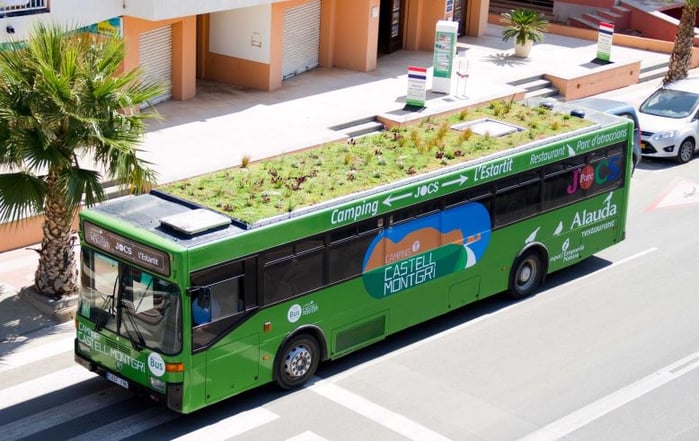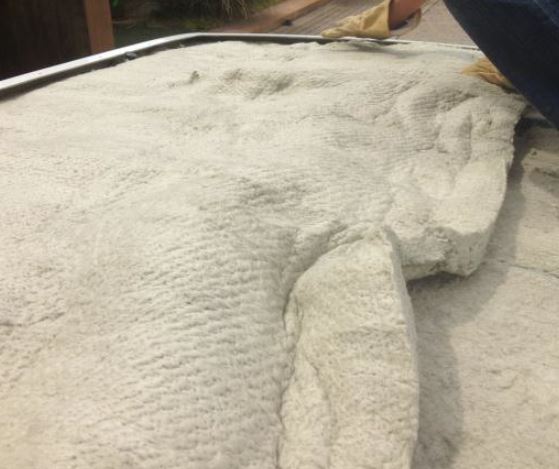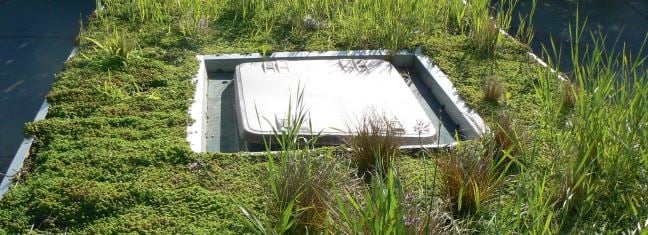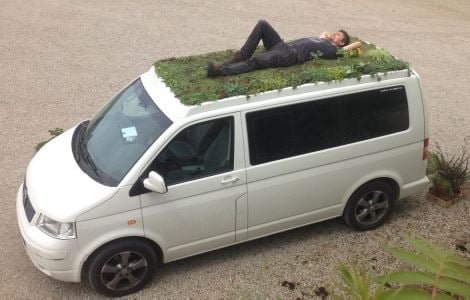Phyto Kinetic project has developed out of my own particular understanding of gardening, based on a passion for everyday landscapes, admiration for everything that flows and a vital need to feel part of my environment. I maintain that if civilization can’t get closer to nature, we’re left with little choice but to bring nature here, to where we live. This is how I became a landscape architect.
It’s been a long, long time since humans ceased to be compatible with nature. But we’re forgetting a small yet important detail: we come from nature and one day we will return there. We need vegetation like the air we breathe, but we’re quick to reject it, out of sight, out of mind. We don’t like bugs, we buy cut flowers; we’re running out of pure air, and fast.
About PhytoKinetic
PHYTO KINETIC was born out of this overwhelming need, to integrate as much nature as possible in environments where there is seemingly no room left for it.
This has led to the rise of plant walls and roof gardens with high thermal insulating capacity, rendering them architecturally extremely valuable. Increasingly, architects are incorporating these types of structures in their designs and projects, achieving spectacular plant-filled building façades and roofs.
Cities are full of unused roofs that could be turned into gardens, roofs that are on the move all day long. PHYTO KINETIC is a project that aims to turn the roofs of public transport into gardens throughout the world, patented on a worldwide scale. And it is already happening.
In July 2012, PhytoKinetic launched the first green roof garden bus in the world.

It succeeded in reducing the inside temperature of the vehicle by 3.5ºC in midsummer temperatures, due to the high insulating capacity of the green roofs gardens, which also means that it is a significant energy-saving mechanism.
It is also important to note that the green roof garden acts as a CO2 drain for that vehicle. Taking into account that the average useful surface area of an urban bus is 15 m2, we only need to multiply this figure by the number of buses in the city; in a theoretical case of 1.000 vehicles, this would mean nothing less than 15,000 m2 of gardens moving around the city, helping to recycle urban air.
Equally significant is the educational importance of green – or indeed a whole range of colours - over black concrete, and their role in combating the Urban Heat Island Effect. Excessive quantities of concrete and tar prevent organic material from breathing, which dissipates heat energy emanating from buildings around us. In other words, we need gardens to reduce these effects. A city that increases its green spaces increases its ecological value and biodiversity.
The system itself is very practical.
Firstly, I had to take the weight of the PhytoKinetic garden into account, making sure it complies with safety regulations and doesn’t exceed the kg/m2 that the vehicle structure is able to withstand in the event of sudden movements. To do this, in PhytoKinetic we only use the best materials available on the market for roof gardens.
It is essential that the roof is 100% waterproofed and stays completely free of moisture, so I have used polyurea, which provides the roof with a lifelong seal. The polyurea has a maximum thickness of 1.5 mm, comes out at a temperature of over 80ºC and dries in 10 seconds.
This means that we can start work straightaway by positioning the perforated stainless steel grid (used to drain off water) that frames the roof, going round its whole perimeter. Fixing perforated bands throughout the interior surface prevents the planted material from moving in the event of braking. These are placed at intervals of 30cm throughout the cover.
To support the rooting, I have replaced the organic substrate for Knauf Insulation’s Urbanscape multifunctional growing media.

This is up to 10 times lighter and has greater moisturising capacity, and due to that much higher capacity to thermally insulate and cool down the vehicle, which is one of PhytoKinetic’s strongest points (more than 4,5ºC in/out difference).
Sedum blankets are placed on top of this as the main vegetation layer, which not only reduces moisture loss through sunlight but also covers the roof completely. On top of this, and depending on personal taste, plants are positioned everywhere.

Finally, a lightweight and resistant mesh is tightly fixed to the inner perimeter and grid to ensure that nothing moves from its place. In only a few weeks, this mesh will disappear beneath the vegetation, although it will still be functioning as the most important safety mechanism.
How is roof garden bus system watered?
1. By using water left over from the air conditioning system which, instead of being extracted from the lower part of the bus, is extracted from the top of the bus, which is where the air conditioning unit is situated. This means that the roof garden is watered according to plants need, which means much less than a normal garden, thanks again to Knauf Insulation’s Urbanscape growing media, as it gets saturated with water evenly distributed over the entire surface, allowing the roots satisfy their own humidity needs. The hotter it is and the more water needed by the plants, the more often they will be watered.
2. If the bus does not have air conditioning, washing the vehicle weekly in the vehicle wash at the terminal will be enough. It is worth noting that automatic vehicle washes have programs that can operate without rollers and soap on the upper section of a vehicle. How often it should be watered will depend on the type of plants on the roof and, of course, the city’s location.
Once all this has been put into action, imagination and creativity come into play.
Different bus routes could be identified by the types of plants on the buses. Or consider the potential interest of brand sponsors that want to be connected directly with projects focusing on sustainability and urban ecology on a local or international level. Maybe a company would want to sponsor buses with petunias, or roses, or even have its own logo made up of different plants on the bus roof. Rest assured that spectacle is guaranteed from the first floor.

Lastly, one needs only to think of what an incredible pleasure it would be to travel inside a moving garden, the inevitable sense of being a living part of the landscape for a few minutes.
Not everyone is lucky enough to come into contact with nature as much as they should. But now nature is within our daily reach, enabling us to become part of it, even for just a short time, while going to work, home, to the cinema or the countryside.
If it’s like this, the future seems a little better. Much better in fact.
Blog written by Marc Grañén, Landscape artist, Creator and Director of PhytoKinetic, www.marcgranen.net
For more information on Urbanscape Green Solutions and green roof benefits check our website or
download Urbanscape brochure below:



